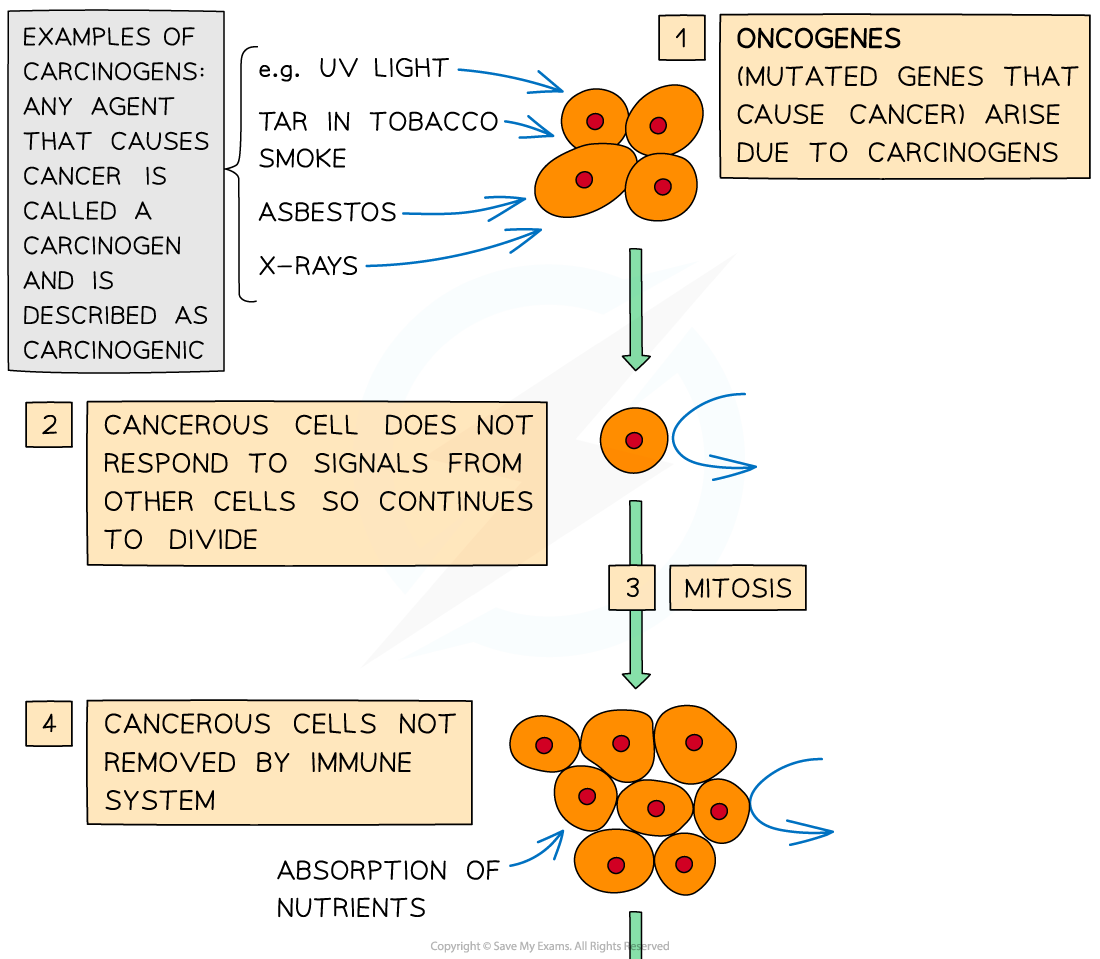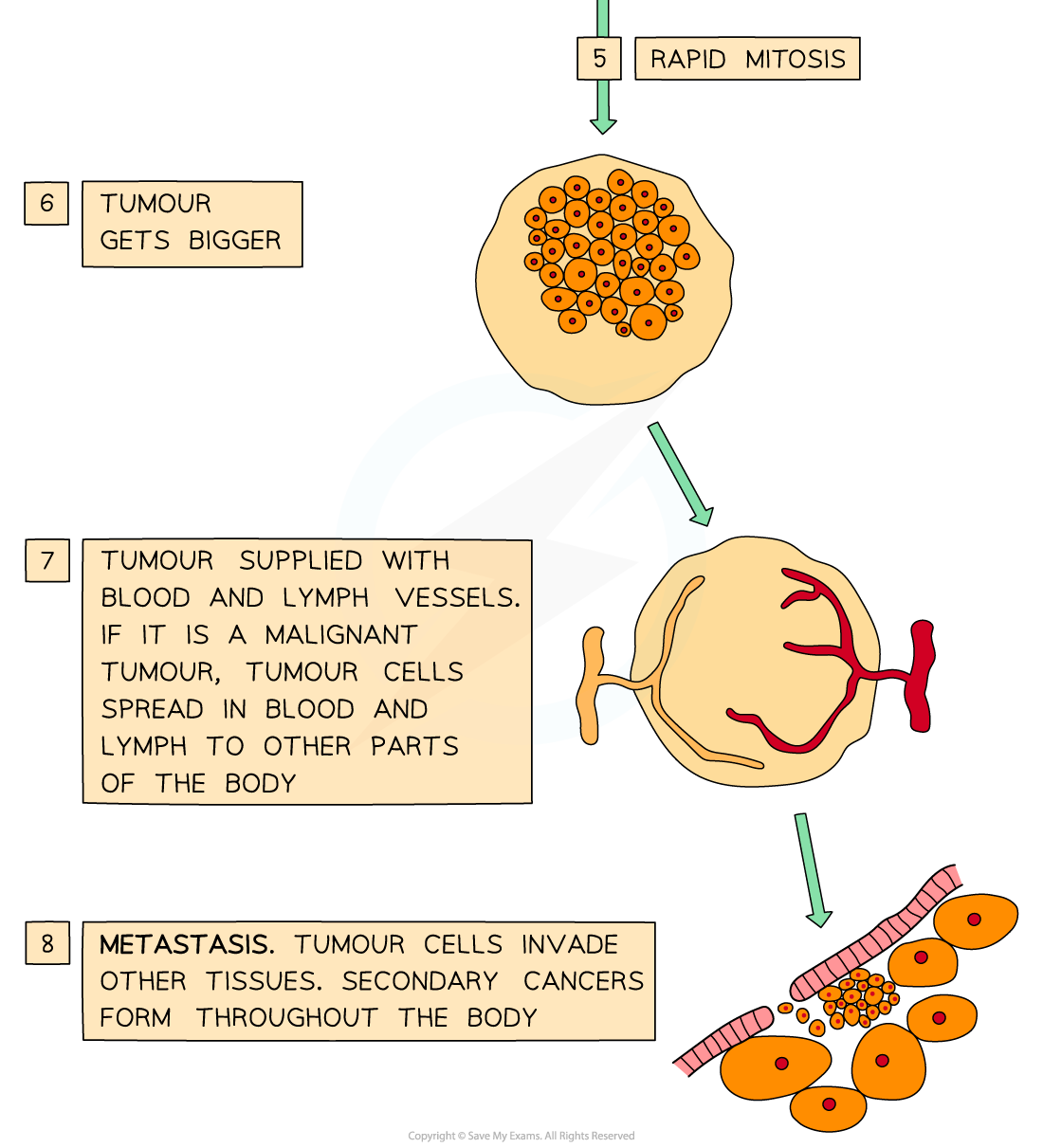Tumour Formation
- Cancers demonstrate how important it is that cell division is precisely controlled, as cancers arise due to uncontrolled mitosis
- Cancerous cells divide repeatedly and uncontrollably, forming a tumour (an irregular mass of cells)
- Cancers start when changes occur in the genes that control cell division
- A change in any gene is known as a mutation
- If the mutated gene is one that causes cancer it is referred to as an oncogene
- Mutations are common events and don’t lead to cancer most of the time
- Most mutations either result in early cell death or result in the cell being destroyed by the body’s immune system
- As most cells can be easily replaced, these events usually have no harmful effect on the body
- The mutations that result in the generation of cancerous cells do not result in early cell death or in the cell being destroyed by the body’s immune system
- This means that the harmful mutation occurring in the original cell can be passed on to all that cell’s descendants
- A typical tumour contains around a thousand million cancerous cells by the time it is detected
Carcinogens
- Mutagens are agents that alter the genetic material of an organism
- E.g. biological organisms (viruses), radiation (X-rays, UV light) or chemical substances (tar in tobacco smoke)
- If mutagens cause cancers they are called carcinogens
- Carcinogens are any agents that may cause cancer
Types of tumour
- Some tumours (such as warts) do not spread from their original site – these are known as benign tumours and do not cause cancer
- Some tumours spread through the body, invading and destroying other tissues – these are known as malignant tumours and cause cancer
- Malignant tumours interfere with the normal functioning of the organ/tissue in which they have started to grow (eg. they may block the intestines, lungs or blood vessels)
- Malignant tumour cells can break off the tumour and travel through the blood and/or lymphatic system to form secondary growths in other parts of the body
- The spreading of cancers in this way is known as metastasis
- Metastasis is very dangerous as it can be very difficult to detect, locate and remove secondary cancers


Stages in the development of cancer
Exam Tip
Make sure you know examples of mutagens. Also, you should know that some viruses (known as oncoviruses) cause cancer and can therefore also be described as mutagens.
Smoking & Cancer
- Scientists studying the incidence and distribution of certain cancers identified links between smoking and cancer
- However, it was only when laboratory investigations showed that cigarette smoke contained more than 4000 chemicals, at least 40 of which were carcinogens, that a correlation was established
- There is a positive correlation between smoking and cancer. The more cigarettes smoked per day the higher the chance of developing certain cancers (e.g. lung and mouth)